Foreign
Putin wins Russian presidential election with 87.97% of the vote
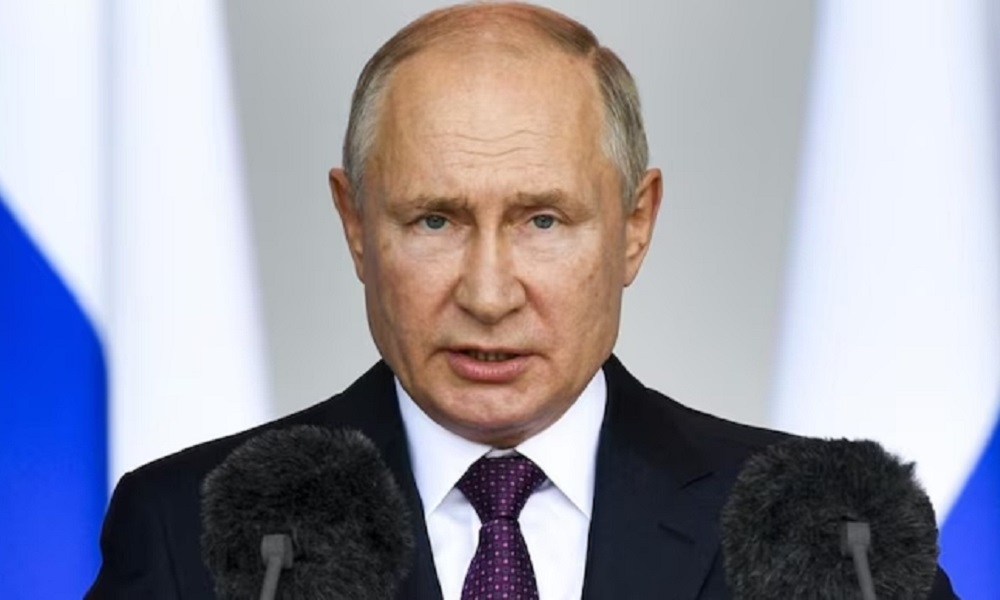
Vladimir Putin was headed for another six-year term as Russian president Sunday, exit polls showed, paving the way for the hardline former spy to become the longest-serving Russian leader in more than 200 years.
Victory for the 71-year-old in the three-day vote was never in doubt, with all his major opponents dead, in prison or exiled, and authorities waging an unrelenting crackdown on those who publicly oppose the Kremlin or its military offensive on Ukraine.
The government-run VTsIOM pollster projected Putin had won the election with 87 percent of the vote after polls closed in Russia’s western-most region of Kaliningrad at 1700 GMT.
The highly-touted election was marked by a surge in deadly Ukrainian bombardments, incursions into Russian territory by pro-Kyiv sabotage groups and vandalism at polling stations.
The Kremlin cast the election as an opportunity for Russians to throw their weight behind the full-scale military operation in Ukraine, where voting is also being staged in Russian-controlled territories.
Kyiv slammed the vote as a sham and President Volodymyr Zelensky denounced Putin as a “dictator” who was “drunk from power”.
“There is no evil he will not commit to prolong his personal power,” Zelensky said in a message on social media.
– Opposition dismisses vote –
Allies of the late Alexei Navalny — Putin’s most prominent rival, who died in an Arctic prison last month — has urged voters to flood polling stations at noon and spoil their ballots for a “Midday Against Putin” protest.
His wife, Yulia Navalnaya, was greeted by supporters with flowers and applause in Berlin. She said she had written her late husband’s name on her ballot after voting at the Russian embassy.
Some voters in Moscow appeared to heed Navalny’s call, telling AFP they had come to honour his memory and show their opposition in the only legal way possible.
“I came to show that there are many of us, that we exist, that we are not some insignificant minority,” said 19-year-old student Artem Minasyan at a polling station in central Moscow.
Leonid Volkov, a senior aide to the late opposition leader who was recently attacked in Lithuania where he fled political persecution in Russia, dismissed the results published by Moscow.
“The percentages drawn for Putin have, of course, not the slightest relation to reality,” Volkov, Navalny’s former chief of staff wrote on social media.
Russia’s foreign ministry spokeswoman, Maria Zakharova, argued the long lines outside embassies abroad were evidence of support for the Kremlin.
“If the people queueing abroad to vote in the Russian presidential election had taken part in the ‘noon’ action, they would have all dispersed after noon. But no,” she wrote on social media.
– Tributes to Navalny –
At Navalny’s grave in a Moscow cemetery, AFP reporters saw spoiled ballot papers with his name scrawled across them on a pile of flowers.
Navalny, who galvanised mass protests, tried to run against Putin in the 2018 presidential election and toured Russia to drum up support, but his candidacy was rejected.
“We live in a country where we will go to jail if we speak our mind. So when I come to moments like this and see a lot of people, I realise that we are not alone,” said 33-year-old Regina.
There were repeated acts of protest in the first days of polling, with a spate of arrests of Russians accused of pouring dye into ballot boxes or arson attacks.
Any public dissent in Russia has been harshly punished since the start of Moscow’s offensive in Ukraine on February 24, 2022 and there were repeated warnings from the authorities against election protests.
The OVD-Info police monitoring group announced that at least 80 people had been detained across nearly 20 cities in Russia for protest actions linked to the elections.
The surge in Ukrainian strikes on Russia continued unabated with the Russian defence ministry reporting at least eight regions attacked overnight and on Sunday morning.
– Fatal border attacks –
Three airports serving the capital briefly suspended operations following the barrage, while a drone attack in the south sparked a fire at an oil refinery.
In Russia’s border city of Belgorod, multiple rounds of shelling killed two — a man and a 16-year-old girl — and wounded 12 more, the region’s governor said Sunday.
The governor has ordered the closure of shopping centres and schools in Belgorod and the surrounding area for two days because of the strikes.
In the Russian-controlled territory of Ukraine’s Zaporizhzhia region, where voting is also taking place, “kamikaze drones” set a polling station ablaze, according to the Moscow-installed authorities.
– ‘Difficult period’ –
Putin, a former KGB agent, has been in power since the last day of 1999 and is set to extend his grip over the country until at least 2030.
If he completes another Kremlin term, he will have stayed in power longer than any Russian leader since Catherine the Great in the 18th century.
In a pre-election address Putin said Russia was going through a “difficult period” and called on the country to be “united and self-confident.”
A concert on Red Square is being staged on Monday to mark 10 years since Russia’s annexation of Ukraine’s Crimea peninsula — an event that is also expected to serve as a victory celebration for Putin.
Foreign
Massive explosion at Iran port kills at least 14 people, injures 750
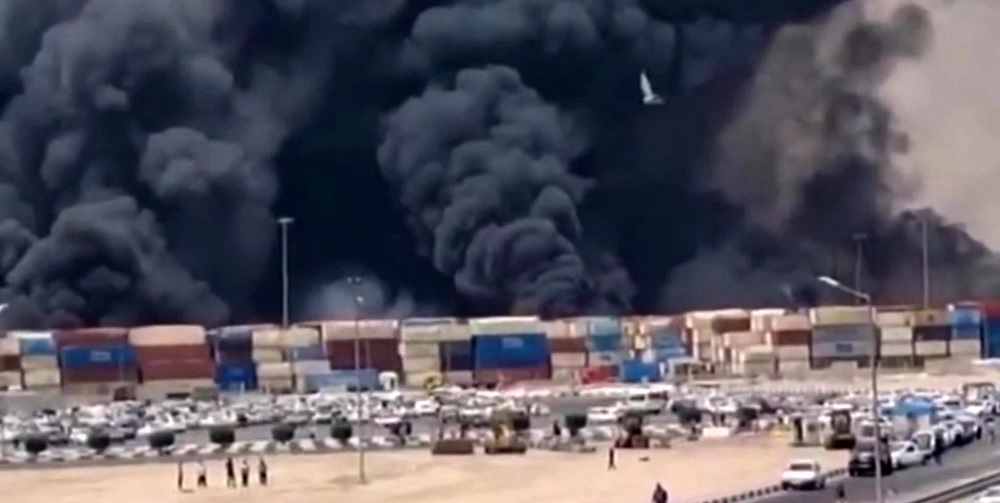
A massive explosion and fire rocked a port Saturday in southern Iran purportedly linked to a shipment of a chemical ingredient used to make missile propellant, killing 14 people and injuring around 750 others.
Helicopters and aircraft dumped water from the air on the raging fire through the night into Sunday morning at the Shahid Rajaei port. The explosion occurred just as Iran and the United States met Saturday in Oman for the third round of negotiations over Tehran’s rapidly advancing nuclear program.
No one in Iran outright suggested that the explosion came from an attack. However, even Iranian Foreign Minister Abbas Araghchi, who led the talks, on Wednesday acknowledged that “our security services are on high alert given past instances of attempted sabotage and assassination operations designed to provoke a legitimate response.”
State media offered the casualty figures. But there were few details on what sparked the blaze just outside of Bandar Abbas, causing other containers to reportedly explode.
Security firm says port received chemical for missile fuel
The port took in a shipment of the missile fuel chemical in March, the private security firm Ambrey said. The fuel is part of a shipment of ammonium perchlorate from China by two vessels to Iran first reported in January by the Financial Times. The chemical used to make solid propellant for rockets was going to be used to replenish Iran’s missile stocks, which had been depleted by its direct attacks on Israel during the war with Hamas in the Gaza Strip.
“The fire was reportedly the result of improper handling of a shipment of solid fuel intended for use in Iranian ballistic missiles,” Ambrey said.
Ship-tracking data analyzed by The Associated Press put one of the vessels believed to be carrying the chemical in the vicinity in March, as Ambrey said. Iran hasn’t acknowledged taking the shipment. The Iranian mission to the United Nations didn’t respond to a request for comment on Saturday.
It’s unclear why Iran wouldn’t have moved the chemicals from the port, particularly after the Beirut port blast in 2020. That explosion, caused by the ignition of hundreds of tons of highly explosive ammonium nitrate, killed more than 200 people and injured more than 6,000 others. However, Israel did target Iranian missile sites where Tehran uses industrial mixers to create solid fuel.
Social media footage of the explosion on Saturday at Shahid Rajaei saw reddish-hued smoke rising from the fire just before the detonation. That suggests a chemical compound being involved in the blast — like in the Beirut explosion.
“Get back get back! Tell the gas (truck) to go!” a man in one video shouted just before the blast. “Tell him to go, it’s going to blow up! Oh God, this is blowing up! Everybody evacuate! Get back! Get back!”
On Saturday night, the state-run IRNA news agency said that the Customs Administration of Iran blamed a “stockpile of hazardous goods and chemical materials stored in the port area” for the blast, without elaborating.
An aerial shot released by Iranian media after the blast showed fires burning at multiple locations in the port, with authorities later warning about air pollution from chemicals such as ammonia, sulfur dioxide and nitrogen dioxide in the air. Schools and offices in Bandar Abbas will be closed Sunday as well.
Port a major destination for Iranian cargo
Shahid Rajaei has been a target before. A 2020 cyberattack attributed to Israel targeted the port. It came after Israel said that it thwarted a cyberattack targeting its water infrastructure, which it attributed to Iran. Israeli officials didn’t respond to requests for comment regarding Saturday’s explosion.
Social media videos showed black billowing smoke after the blast. Others showed glass blown out of buildings kilometers, or miles, away from the epicenter of the explosion. State media footage showed the injured crowding into at least one hospital, with ambulances arriving as medics rushed one person by on a stretcher.
Hasanzadeh, the provincial disaster management official, earlier told state television that the blast came from containers at Shahid Rajaei port in the city, without elaborating. State television also reported that there had been a building collapse caused by the explosion, though no further details were offered.
The Interior Ministry said that it launched an investigation into the blast. Iranian President Masoud Pezeshkian also offered his condolences for those affected in the blast.
Shahid Rajaei port in Hormozgan province is about 1,050 kilometers (650 miles) southeast of Iran’s capital, Tehran, on the Strait of Hormuz, the narrow mouth of the Persian Gulf through which 20% of all oil traded passes.
Foreign
Judge halts Trump’s shutdown of Voice of America

A federal judge has ordered the Trump administration to restore all jobs and funding for the Voice of America and other US-backed news outlets, ruling that efforts to dismantle it violated the law and Constitution.
Over 1,300 VOA employees, including about 1,000 journalists, were placed on leave following President Donald Trump’s order. The White House has accused the broadcaster of being “anti-Trump” and “radical”.
VOA, still primarily a radio service, was set up during World War II to counter Nazi propaganda, and has become a major global media broadcaster.
The ruling noted that because of the cuts, “VOA is not reporting the news for the first time in its 80-year existence”.
Judge Royce Lamberth said the administration acted “without regard to the harm inflicted on employees, contractors, journalists, and media consumers around the world”.
He ordered the administration to take steps to restore employees and contractors to the jobs they had prior to the executive order, and to do the same for Radio Free Asia and the Middle East Broadcasting Networks.
The judge found the administration also likely violated the International Broadcasting Act and Congress’ power to appropriate funding.
“My colleagues and I are grateful for this ruling. But we know that this is just a small step forward, as the government is likely to appeal,” said Patsy Widakuswara, the VOA White House bureau chief and a lead plaintiff in the lawsuit.
“We are committed to continuing to fight against what we believe is the administration’s unlawful silencing of VOA until we can return to our congressional mandate: to tell America’s stories with factual, balanced, and comprehensive, reporting,” she said.
Trump has long criticised VOA as part of his broader attacks against the media, frequently accusing mainstream outlets of bias.
After taking office in January, he appointed a political ally, Kari Lake, to run VOA. Lake has previously supported Trump’s false claims that the 2020 election was stolen from him.
In March, Trump ordered the US Agency for Global Media (USAGM), which oversees VOA and funds outlets like Radio Free Europe and Radio Free Asia, to be “eliminated to the maximum extent consistent with applicable law”.
A separate judge in New York temporarily blocked the executive order after journalists, advocacy groups and unions sued, arguing the move was unlawful.
Judge Lamberth, who is based in Washington, DC, ruled the Trump administration lacked the authority to shutter VOA, which is funded by Congress and has a legislative mandate to deliver credible news globally.
“It is hard to fathom a more straightforward display of arbitrary and capricious actions than the Defendants’ actions here,” he wrote.
“Even though several courts have ruled that the President can remove personnel and terminate grants, a radical district judge is once again attempting to interfere with the Trump Administration’s efforts to make the government more efficient,” White House spokesperson Taylor Rogers said in a statement.
USAGM did not immediately respond to a request for comment.
Foreign
Pope Francis Death: Italy, Argentina 25 other Countries Declared National Mourning (Full List)
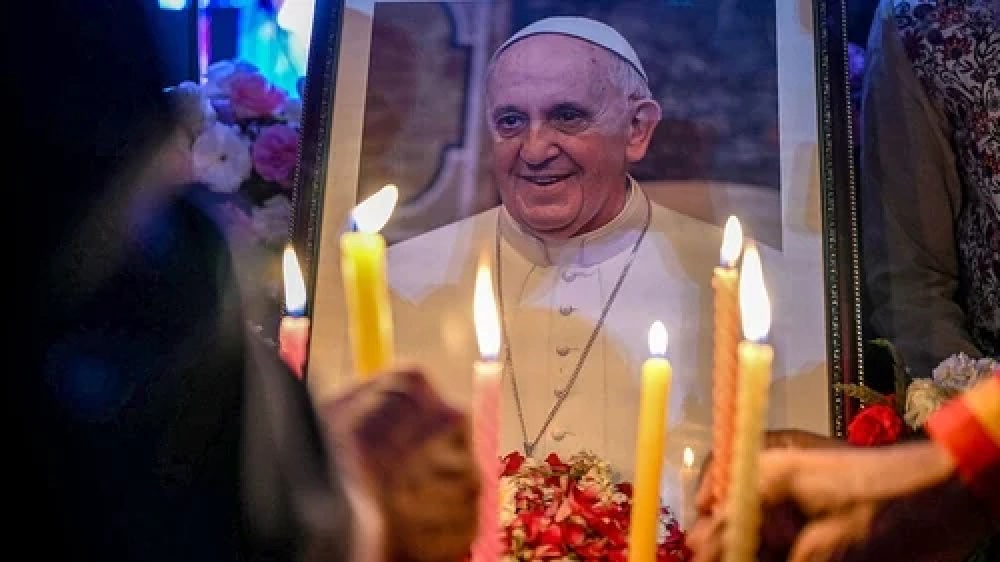
The world stood still on April 21, 2025, as the Vatican officially confirmed the death of Pope Francis, aged 88. His passing marked the end of a historic papacy and triggered an outpouring of grief across continents. Numerous nations, especially those with significant Catholic populations, declared national mourning periods to honor the pontiff’s life, spiritual leadership, and global influence.
From Latin America to Europe, Asia, and Africa, countries initiated solemn observances, lowered national flags to half-mast, and held public commemorations. This article highlights the full list of countries that declared national mourning in memory of Pope Francis.
Why Pope Francis’s Death Resonated Globally
Pope Francis, born Jorge Mario Bergoglio in Buenos Aires, Argentina, was the first Jesuit and the first Latin American pope in the history of the Catholic Church. Since his election in 2013, he championed issues such as poverty alleviation, climate action, interfaith dialogue, and social justice, making him a spiritual leader not just for Catholics, but for people of all faiths.
His legacy transcended religious boundaries, prompting state-led tributes even in non-Catholic majority nations.
List of Countries That Declared National Mourning for Pope Francis
Below is a country-by-country breakdown of declared national mourning periods:
| Country | Mourning Period | Remarks |
|---|---|---|
| Argentina | 7 days (Apr 22–28) | Pope Francis’s homeland; nationwide memorial services held. |
| Brazil | 7 days | Churches and public buildings observed solemn tributes. |
| East Timor | 7 days | Predominantly Catholic nation with extensive observances. |
| Italy | 5 days (Apr 21–26) | Vatican’s host country; held massive state ceremonies. |
| Costa Rica | 4 days | Flags at half-mast; public prayers offered. |
| Spain | 3 days | Public processions and masses conducted. |
| India | 3 days | Interfaith tributes and official condolences shared. |
| Philippines | 3 days | Nation-wide tributes; churches filled with mourners. |
| Poland | 3 days | Mourning coincided with the Pope’s funeral. |
| Portugal | 3 days | Official services in Lisbon and major cities. |
| Lebanon | 3 days | Christian and Muslim leaders offered joint prayers. |
| Venezuela | 3 days | Government-organized memorials. |
| Chile | 3 days | National flags at half-mast; televised funeral services. |
| Cuba | 3 days | Nationwide mourning with Catholic mass ceremonies. |
| Guatemala | 3 days | Memorial services across Catholic institutions. |
| Panama | 3 days | Official decree and observances. |
| Dominican Republic | 3 days | Nationwide religious services held. |
| Paraguay | 3 days | Church bells rang across the country in honor. |
| Peru | 3 days | Large public gatherings held for prayers. |
| Ecuador | 3 days | Tributes from religious and government figures. |
| Puerto Rico | 3 days | Government-declared mourning period observed. |
| Malta | 1 day (Apr 26) | Marked during the Pope’s funeral. |
| Croatia | 1 day | Flags lowered; public messages of condolence shared. |
| Hungary | 1 day | National mourning aligned with funeral rites. |
| Uruguay | 1 day | Ceremonies held in Catholic schools and churches. |
| Cape Verde | 1 day | Special services held across Catholic communities. |
Global Religious and Political Reactions
World leaders, religious figures, and citizens across continents expressed grief and paid glowing tributes to Pope Francis’s legacy. The United Nations, European Union, and African Union all issued statements acknowledging his contributions to world peace, interreligious harmony, and humanitarian service.
In cities like Manila, Rome, Buenos Aires, and Lagos, candlelight vigils were held. Cathedrals rang their bells in synchronized tribute, while mosques and temples also joined in interfaith memorial services.
Pope Francis’s death has left a void in the global religious and moral conscience. His efforts to promote compassion, inclusiveness, and humility in leadership will continue to inspire generations to come.
While the Vatican prepares for a papal conclave to elect a successor, the world continues to reflect on the lessons and legacy of a pope who bridged faith and humanity in unprecedented ways.
The widespread declaration of national mourning in countries around the world highlights just how impactful Pope Francis was—not only to Catholics but to people of all beliefs. His death marks the end of a deeply influential era in the Church’s history.
May his soul rest in peace.
-

 News7 hours ago
News7 hours agoJust in: Senator Natasha tenders satirical ‘apology’ to Akpabio
-

 News22 hours ago
News22 hours agoGunmen abduct two senior LG workers, three others
-

 News24 hours ago
News24 hours agoNDLEA storms Lagos hotel, recovers N1.042billion illicit drug consignments(Photos)
-

 News23 hours ago
News23 hours agoArmy Chief condemns beating, harassing civilians in military uniform says, it’s wrong
-

 News16 hours ago
News16 hours agoBenue LG chairman gives Fulanis 48hrs to leave all farmlands
-

 News21 hours ago
News21 hours agoFrancophone Ambassadors, Nigeria Unite To Fight Against Climate Change
-
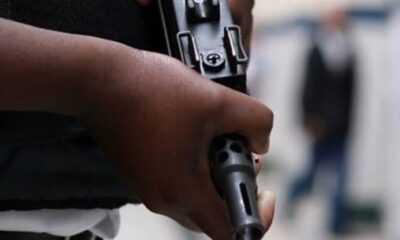
 News16 hours ago
News16 hours agoFive suspected kidnappers eliminated by police in Delta
-
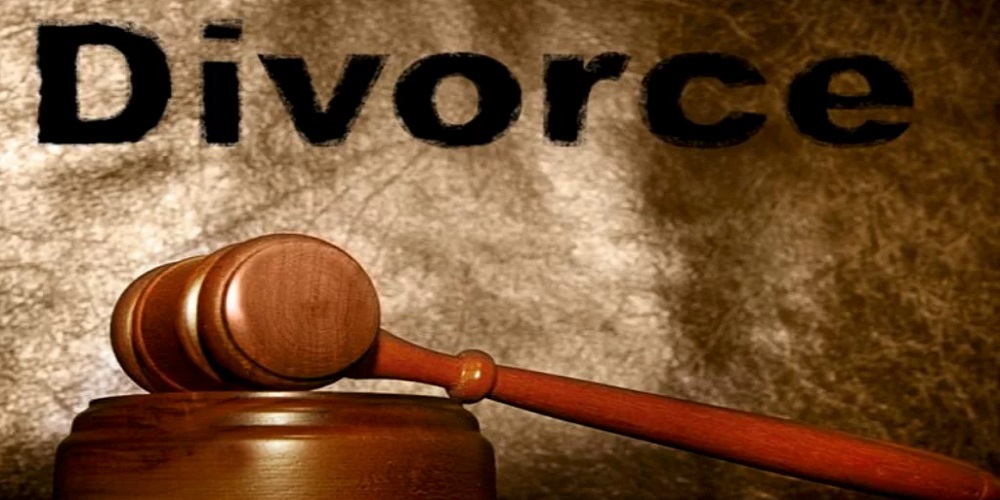
 Metro8 hours ago
Metro8 hours ago‘My husband always makes love throughout the night until morning’ – Woman Wants Divorce





